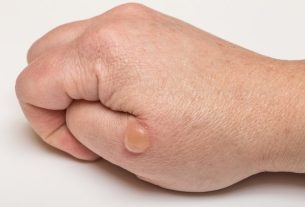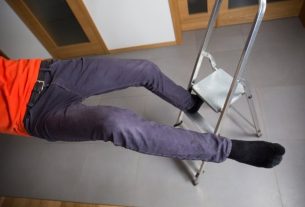Cardiac massage is a technique that allows you to replace the work of the heart and continue pumping blood around the body, maintaining oxygenation of the brain.
It is considered the most important link in basic life support, after seeking medical help.
Cardiac massage should always be started when the victim is unconscious and not breathing. To assess breathing, place the person face up and then place your face close to the person’s mouth and nose and look at the chest. If you don’t see your chest rising, you don’t feel breathing on your face and you don’t hear any breathing, you should start the massage. This assessment should not take more than 10 seconds.
1. How to do it in adults
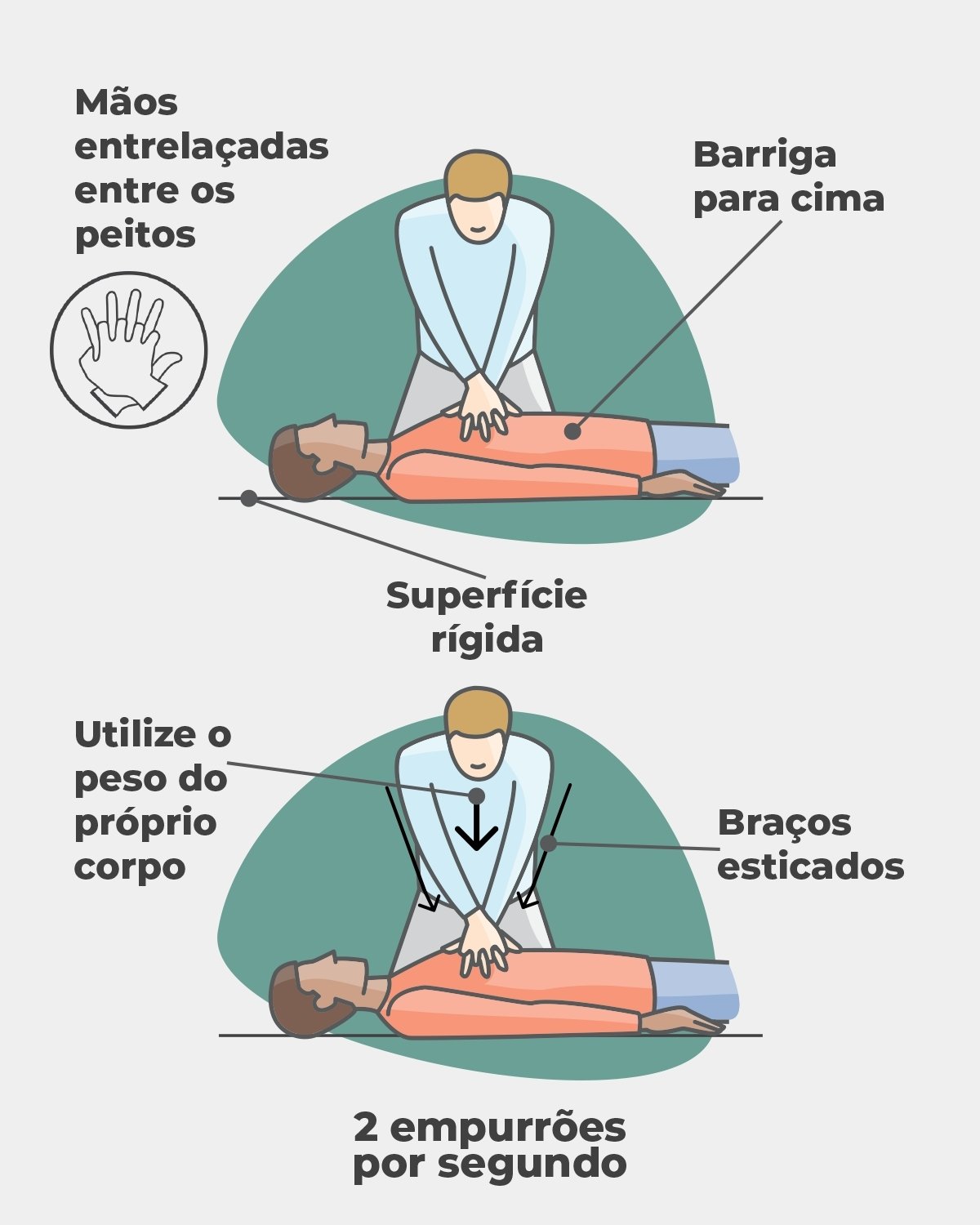
To perform cardiac massage in adolescents and adults, the following steps must be followed:
- Call 192 and call an ambulance;
- Keep the person on their back and on a hard surface;
- Place your hands on the victim’s chestinterlacing your fingers, between the nipples as shown in the figure below;
- Push your hands tightly against your chest, keeping your arms straight and using your own body weight, counting at least 2 pushes per second until the rescue service arrives. It is important to allow the patient’s chest to return to its normal position between each push.
Cardiac massage is normally interspersed with 2 breaths every 30 compressions, however, if it is an unknown person or if you do not feel comfortable breathing, compressions must be maintained continuously until the ambulance arrives.
Although the massage can be done by just 1 person, it is a very tiring process and, therefore, if there is another person available, it is advisable to take turns every 2 minutes, for example, taking advantage of the moment of breathing to make the change, avoiding the compressions are stopped for more than 30 seconds.
See what to do in the case of an acute myocardial infarction.
2. How to do it in children
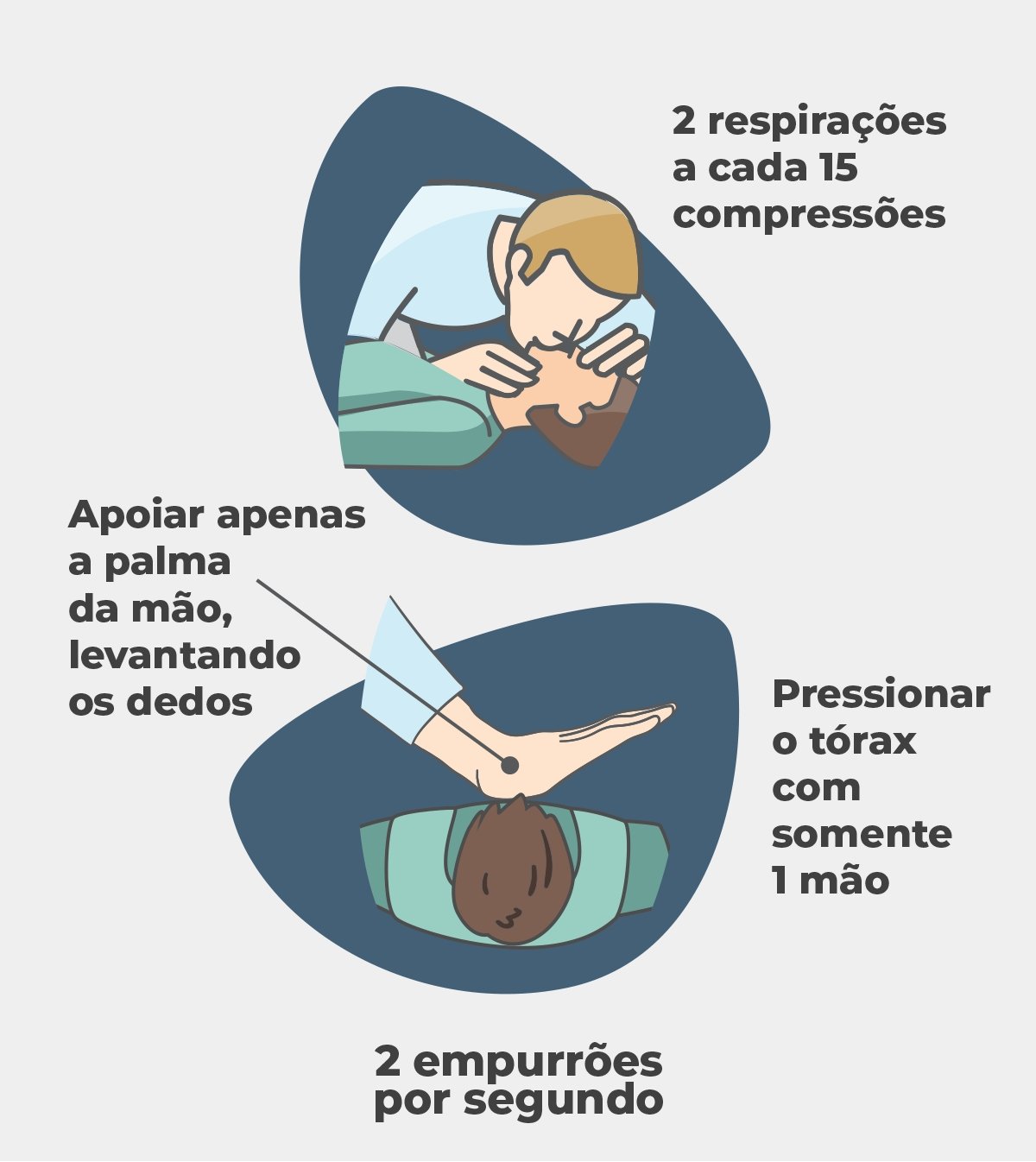
To perform cardiac massage on children up to 10 years old, the steps are slightly different:
- Call an ambulance by calling number 192;
- Lay the child on a hard surface and position your chin higher to make breathing easier;
- Take two breaths mouth to mouth;
- Place the palm of one hand, with fingers raised, on the child’s chestbetween the nipples;
- Press the chest with only 1 handcounting 2 compressions per second until rescuers arrive.
- Take 2 breaths mouth-to-mouth every 15 compressions.
Unlike adults, children’s breaths must be maintained to facilitate oxygenation of the lungs.
3. How to do it for babies
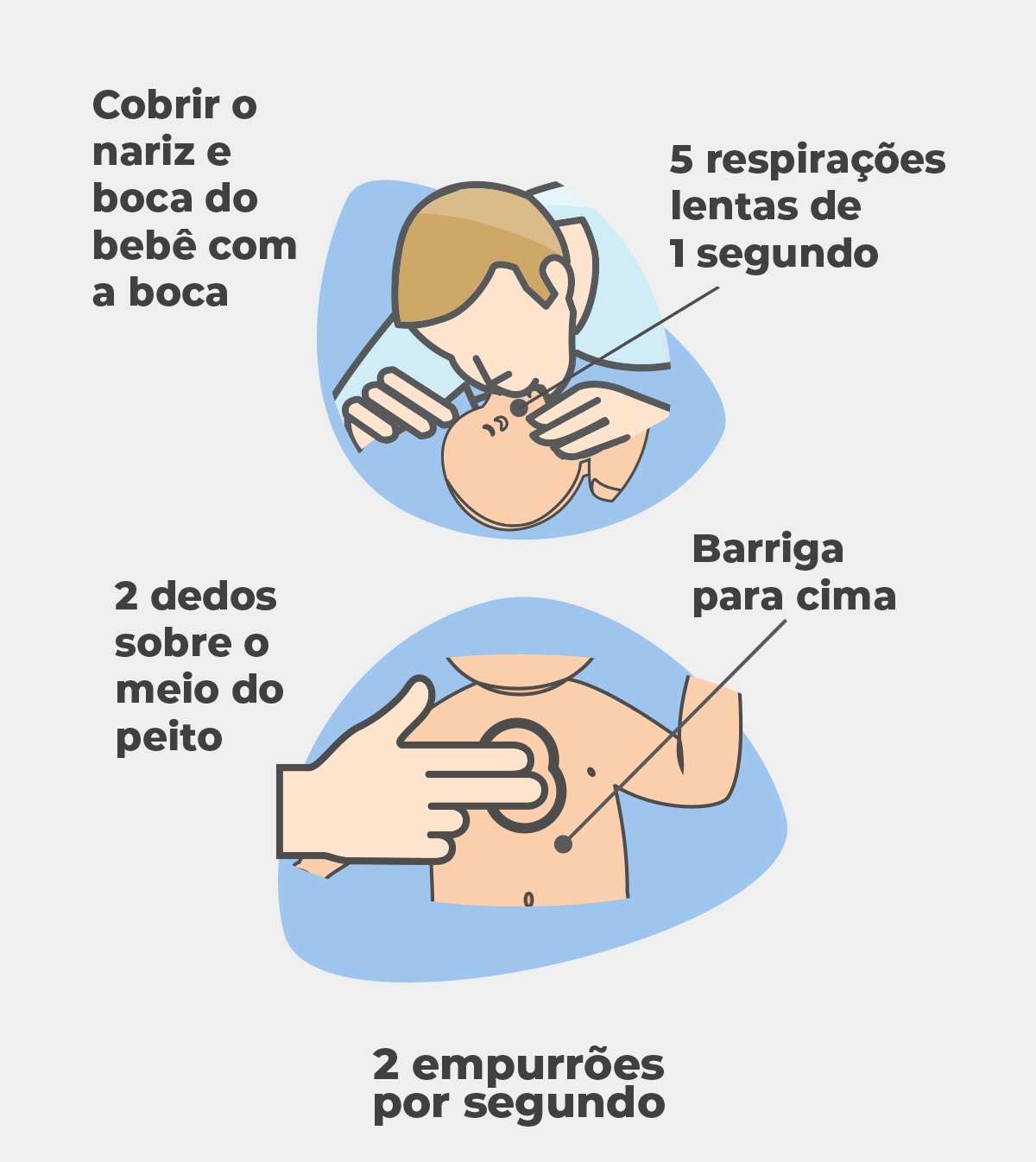
In the case of a baby, you should try to remain calm and follow the following steps:
- Call an ambulancecalling number 192;
- Lay the baby face up on a hard surface;
- Position the baby’s chin higherto facilitate breathing;
- Remove any object from the baby’s mouth that may be hindering the passage of air;
- Start with 5 slow 1-second breaths mouth to mouth. The ideal is to cover the baby’s mouth and nose with your mouth. In some cases, the baby may start breathing again and support must be stopped. However, if the baby continues to not breathe, you must proceed to the following steps;
- Place 2 fingers over the middle of the chest, the index and middle fingers are normally placed between the nipples, as shown in the figure;
- Press your fingers downcounting 2 pushes per second, until rescuers arrive.
- Give 2 mouth-to-mouth breaths after every 15 finger compressions.
Just like in children, in babies breathing every 15 compressions must also be maintained to ensure that there is oxygen reaching the brain.
If the baby is choking, cardiac massage should not be started without first trying to remove the object and reestablish the airway. See step-by-step instructions on what to do when your baby chokes.
Importance of cardiac massage
Doing cardiac massage is very important to replace the work of the heart and keep the person’s brain well oxygenated while professional help is arriving. This way it is possible to reduce neurological damage that can begin to appear in just 3 or 4 minutes when the heart is no longer pumping blood.
Currently, the Brazilian Society of Cardiology recommends performing cardiac massage without the need to perform mouth-to-mouth breathing in adult patients. The most important thing in these patients is to perform an effective cardiac massage, that is, one capable of circulating blood with each compression of the chest. In children, breathing should be performed every 30 compressions because, in these cases, the biggest cause of cardiac arrest is hypoxia, that is, lack of oxygenation.
Bibliography
- BAPTISTA, Nelson T. First aid manual. 3rd ed. Sintra: National Fire School, 2018. 114-129.
- INEM. Pediatric Basic Life Support Manual. 2017. Available at: <https://www.inem.pt/wp-content/uploads/2017/09/Suporte-B%C3%A1sico-de-Vida-Pedi%C3%A1trico.pdf>. Accessed on 30 Jul 2021

Sign up for our newsletter and stay up to date with exclusive news
that can transform your routine!
Warning: Undefined array key "title" in /home/storelat/public_html/wp-content/plugins/link-whisper-premium/templates/frontend/related-posts.php on line 12
Warning: Undefined array key "title_tag" in /home/storelat/public_html/wp-content/plugins/link-whisper-premium/templates/frontend/related-posts.php on line 13



